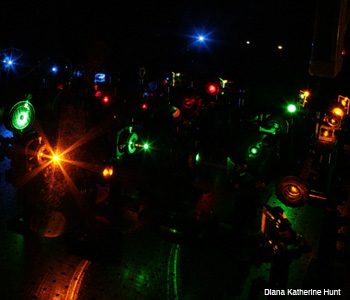Scatterings
Watching Molecular Machines Splice RNA
A recent paper in Science describes how this unusual combination of methods allows researchers to study the assembly of a so-called “spliceosome” in real time.
 A multiple-wavelength microscope system is designed to excite fluorescing biomolecules, allowing researchers to watch the assembly of RNA.
A multiple-wavelength microscope system is designed to excite fluorescing biomolecules, allowing researchers to watch the assembly of RNA.
Multiwavelength single-molecule fluorescence microscopy, combined with genetic engineering and chemical biology techniques, allows unprecedented imaging of the splicing of RNA molecules by a complex molecular machine. A recent paper in Science describes how this unusual combination of methods allows researchers to study the assembly of a so-called “spliceosome” in real time (A.A. Hoskins et al., doi: 10.1126/science.1198830).
…Log in or become a member to view the full text of this article.
This article may be available for purchase via the search at Optica Publishing Group.
Optica Members get the full text of Optics & Photonics News, plus a variety of other member benefits.
